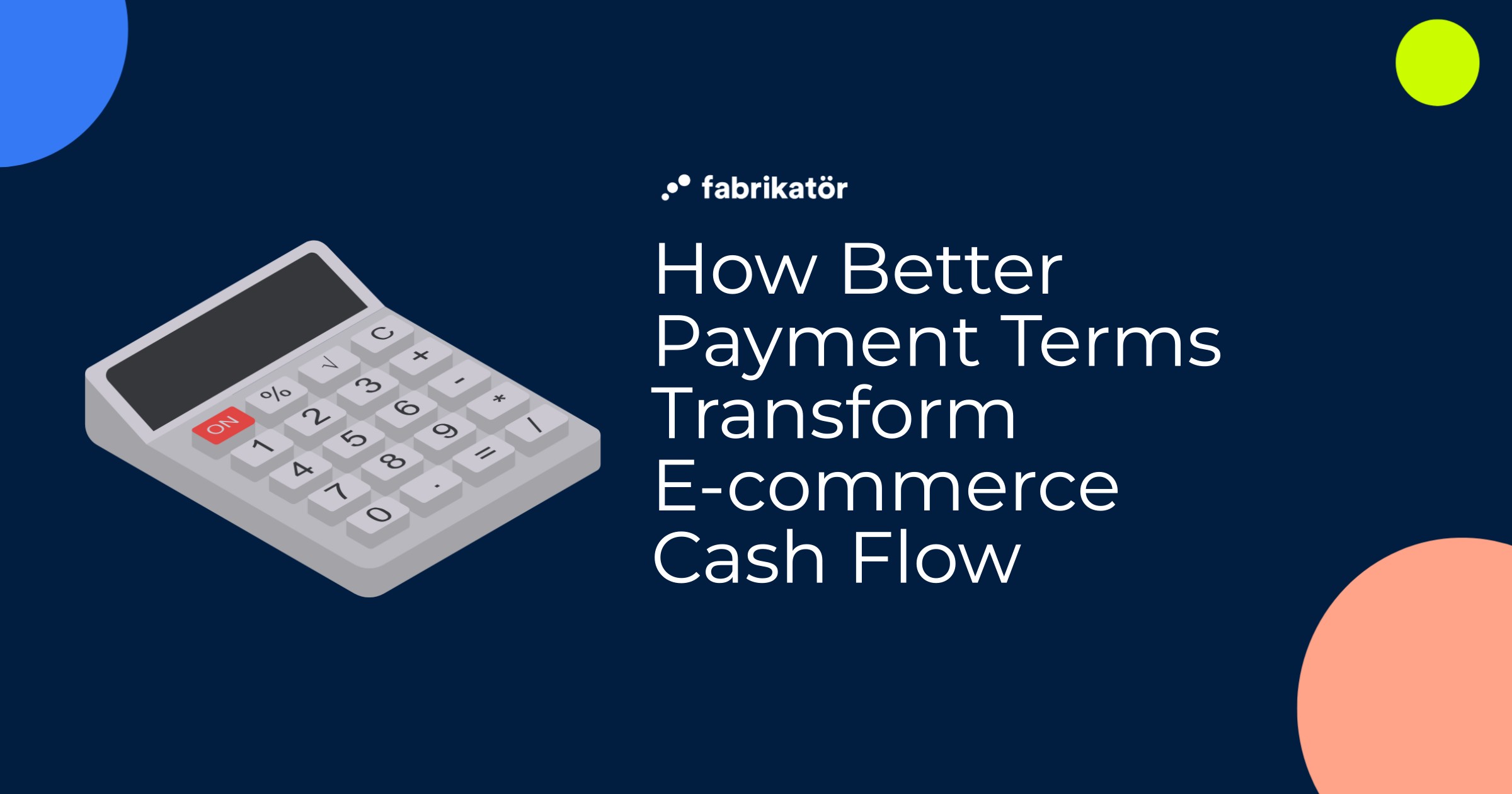Apparel Inventory Management: Definition & Best Practices

When you think of eCommerce stores, what's the first industry that comes to mind? Well, it's got to be apparel, right? 👚👖👙 And statistics back this up, too. As of June 2023, the apparel industry reigns as the most popular category, with 520,321 stores on Shopify.🥇

In the apparel industry, you may face many challenges due to various operational hurdles, such as returned items, increased orders during special occasions, unexpected trends, and more. As a fashion store owner, how do you navigate these turbulent waters 🌊 of the eCommerce ocean? You need to strengthen your 🚢 ship, and that's only possible with efficient apparel inventory management. ✨
What is Apparel Inventory Management?
Apparel inventory management, aka clothing inventory management, is the systematic ordering, storing, tracking, and controlling inventory within the clothing industry, according to Shopify. It includes overseeing inventory levels 👀, customer demand forecasting 🔮, and managing the entire journey of clothing items from procurement to sale. Since apparel stores make up the majority of Shopify stores, competition is fierce. 🔥 Consequently, avoiding out of stock and overstock situations is necessary to maintain customer satisfaction and ensure store profitability. 💸 Well, but why do you need apparel inventory management? Because it brings numerous benefits to your growing eCommerce store. Let's explore them together.
Benefits of Apparel Inventory Management
.webp)
Good inventory management means improvement and development in many aspects of your store. ✨
🚀 Better Forecasting & Planning
With effective apparel inventory management, you can utilize advanced analytics and data-driven insights to forecast demand more accurately. This allows you to adjust your inventory levels accordingly, preventing stockout and overstock situations. You can optimize sales opportunities and reduce excess inventory costs by matching your inventory with demand.
📊 Balanced Stock Levels
Did you know that in 2022, more than half of global e-shoppers reported customers could not make purchases due to being out of stock? That means lost sales opportunities and unsatisfied customers. Having too much, on the other hand, may end up selling items at a discount, which decreases profits. Keeping the right amount of stock on hand is tricky. That’s why a good fashion inventory system supports the balance in stock levels by preventing stockout and overstock.
📌 Do you want to keep selling even when out of stock and satisfy your customers? You can accept backorders for your eCommerce store and turn stockout issues into cash flow generators. 💸 To learn more, read How Does Backorder Work?, Backorder & Preorder Guide, and How to Manage Backorder on Shopify & Best Practices.
💰 Decreased Costs
Effective apparel inventory management also helps you not to keep too much stock in your warehouse. In this way, you can save the extra cost you pay for holding costs like rent and utilities. You can avoid having excess inventory by organizing your warehouse space better and using smart fashion inventory management practices. Also, with successful apparel inventory control, you can negotiate better deals with suppliers that reduce your overall expenses.
🚚 Streamlined Order Process
Efficient order processing is crucial for keeping customers happy and helping you stay ahead of the competition. Apparel inventory management systems make order fulfillment smoother, from placing an order to delivery. Automating tasks like purchase orders, picking items, packing, and shipping reduce errors and speed up order fulfillment. This makes your operations more efficient and improves the overall shopping experience and customer satisfaction.
🛡️ Minimized Errors
You know managing data is tricky, and you are open to errors when you update all the information manually on an Excel spreadsheet. Accordingly, you need an apparel inventory system that eliminates the possibility of costly mistakes. You can keep your inventory records up-to-date with functional apparel inventory management and enhance operational reliability. This lowers the chances of stockout, overstock situations, and fulfillment errors.
🔗 Enhanced Supply Chain Precision
Improving supply chain precision ensures everyone involved in the apparel supply chain is on the same page. Inventory management systems connect suppliers, manufacturers, distributors, and retailers so that they can easily share information. This means everyone follows the same up-to-date status of inventory and orders, helping to keep things running smoothly.
As we’ve seen until now, fashion inventory management has numerous benefits, but only when done correctly. We’ve compiled the practices that you can apply to manage your eCommerce clothing store most effectively.
Best Practices for Fashion Inventory Management

Do you need suggestions for maintaining a functional clothing inventory management process? Here are some best practices for your eCommerce store;
1. Keep an eye on product variants! 👀
Monitoring product variations, like sizes and colors, is an important step in managing inventory effectively. A clothing store should always have popular sizes and colors available to meet customer needs.
📌 Want to categorize your inventory clothing inventory based on its value to your eCommerce business? Then, you need a comprehensive analysis, read ABC Analysis for eCommerce Inventory for more information.
2. Regularly check your inventory! 🕵️
Regularly checking your inventory is important to ensure accuracy and address any problems. For example, a clothing store should conduct periodic audits to count their actual stock levels and compare them to its records. If they find any disparities, such as missing items or incorrect counts, they can investigate and correct them promptly. This helps maintain accurate inventory records and prevents issues like stockout or overstocking.
📌 Can you imagine an inventory assistant who regularly checks your inventory and gives you insights about it? That’s Fabrikatör! Schedule a free demo right now for our experts to give you more information. ✨
3. Forecast future demand! 🔮
Use past sales data and current market trends to forecast which clothing items will be in demand. This allows you to adjust your inventory levels accordingly. For example, when you notice a surge in sales for winter coats during colder months, you can prepare your store to have enough stock to meet customer needs in the future. By following current trends and analyzing past sales data, you can make the most realistic inventory plan, maximizing sales opportunities.
4. Build good relationships with suppliers! 🤝
Building solid relationships with your suppliers is key. It ensures you get timely deliveries and favorable terms for restocking your inventory. For example, by maintaining open communication and trust with your fabric supplier, you can ensure you receive high-quality materials on time. This allows you to meet production deadlines and fulfill customer orders smoothly.
5. Streamline order fulfillment! 🛍️
Make sure your order fulfillment process runs smoothly. You can process orders quickly and accurately using technology like barcode scanning and automated tracking. This helps avoid running out of stock or having too much inventory. For instance, a clothing store can ensure that every order is picked, packed, and shipped accurately, keeping customers happy and operations efficient.
6. Analyze your store’s sales performance! 📊
Keep an eye on how your clothing items are selling. By regularly checking your sales data, you can spot which items are flying off the shelves, which are moving slowly, and any new trends emerging. This helps you make smart decisions about managing your inventory. For example, if you notice that a particular style of jeans is selling like hotcakes, you can reorder them to meet demand.
7. Stay flexible! 🙅♀️
Stay flexible with your inventory management. Be ready to adjust your strategies based on what's happening in the market, what your customers are into, and any changes in fashion trends. For example, if there's suddenly a surge in demand for activewear or sustainable fashion, be ready to adjust your inventory to meet these new trends.
8. Organize Your Inventory! 👙🧥
Sort your clothing items into categories to make them easier to manage. This could be by type (like shirts, pants, or dresses), by season (like summer or winter), or by style (like casual or formal). For example, you could have a separate section in your warehouse for all your summer dresses, making it quick and easy to find them when needed.
9. Invest in Inventory Management Software! ✨
We've already discussed the many benefits of apparel inventory management. However, to achieve these benefits, it's important for you to implement the practices we've compiled. Can you easily do this through manual methods or Shopify capabilities? Not exactly. ☹️ That's why you might need an inventory management software. These tools can automate tasks, keep track of your inventory levels in real time, forecast future demand, give you valuable insights, and so much more. Let's discuss the reasons in more detail.
Why Do You Need an Inventory Management App for Your Online Clothing Store?
Because other methods are out-of-date, time-consuming, and error-prone. 📉 Let's say you have a Shopify clothing store and manage your inventory using Shopify, Excel spreadsheet, or manual methods. Here are some reasons why these methods may not be sufficient for your store:
Excel 📊
- Limitations: Excel spreadsheets have limitations that can become cumbersome to manage as your product range and sales volume increase.
- Prone to errors: Manual data entry in Excel increases the risk of human error, leading to inefficiency in stock levels and causing potential stockout or overstock issues.
- Time-consuming: Updating inventory in Excel requires manual data entry, which is time-consuming and can delay updating stock levels across platforms.
Shopify 🛒
- Basic features: Shopify lacks planning and purchasing features. You can't export purchase orders, sync with other apps, or forecast inventory / seasonal demand on Shopify. However, you can accomplish all of these tasks with inventory management software. While Shopify offers basic inventory management tools, they may not be sufficient for effectively managing apparel inventory, especially when tracking product variants.
- Limited customization: Shopify's inventory management features may lack the flexibility and customization options to tailor inventory management processes to your business needs.
Manual Methods 📝
- Labor-intensive: Managing inventory manually involves counting stock, updating spreadsheets, and reconciling data across platforms, which are time-consuming and labor-intensive.
- Prone to errors: Manual data entry is susceptible to human error, leading to inaccuracies in stock levels and potential disruptions in inventory management.
- Inefficient workflow: The manual nature of inventory management can lead to inefficiencies in workflow, hindering productivity and impacting overall business performance.
You can leave behind all cumbersome methods and drawbacks and manage your apparel inventory more efficiently. How? With Fabrikatör! 💫
Apparel Inventory Management Software
Manage your online apparel store easily, efficiently, and quickly with Fabrikatör!
When it comes to apparel, we know keeping up with changing trends and managing inventory can be challenging. 🤯 While you deal with stock issues, customers will expect their products to reach them quickly. 🛍️ However, there's no need to worry about that. Let Fabrikatör handle the inventory process while you focus your time on sales strategies and customer satisfaction!
.webp)
With Fabrikatör, it is not troublesome to manage your online apparel store at all! You can:
👉 Forecast future demand & make more realistic plans,
👉 Deal with unexpected out to stock by accepting backorders,
👉 Replenish your stock easily & save your time,
👉 Create purchase orders in seconds,
👉 Reach deep & meaningful insights on your inventory,
👉 Leverage integrations Fabrikatör builds to support your inventory process,
and more.










